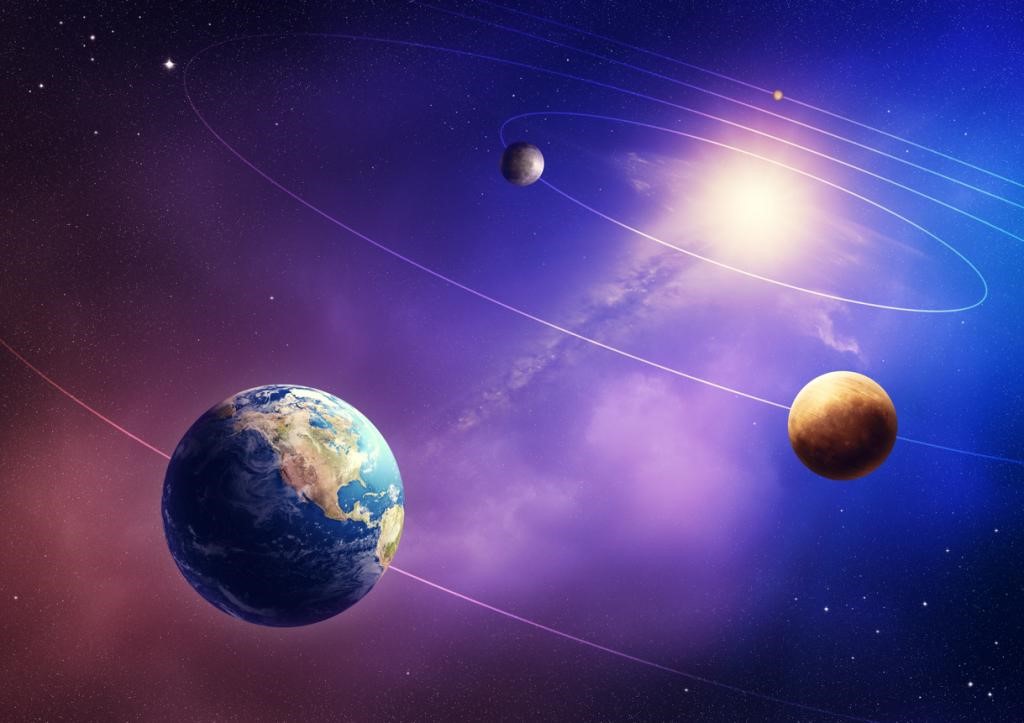Description

Disclaimer: Copyright infringement not intended.
Context
Researchers uncover 2.4 million astronomical grand cycles linking Mars, Earth
Details
Key Findings
- Researchers have made a surprising discovery that links the orbits of Mars and Earth, historical global warming patterns, and the speeding up of deep ocean circulation.
- The researchers have identified a 4 million year cycle, during the course of which the energy levels of deep ocean currents increase and decrease.
- When the oceans are warmer, the energy levels of the deep ocean currents are also higher. These cycles are not linked to human caused climate change.
- The researchers used drilling data from hundreds of sites around the world, gathered over a period of half a century, to examine changes in energy levels of deep ocean currents across time.
- The researchers also used the sedimentary record, or the arrangement of layers in the ground, to identify connections between sedimentary shifts and changes in the orbit of the Earth.
- The researchers were able to identify shifts in deep-sea currents over 2.4 million year cycles.
What are Astronomical Grand Cycles
- These cycles are known as Astronomical Grand Cycles, and the geological record is an unlikely place to find evidence for such cycles.
- The gravitational influence of the planets in the Solar System changes the eccentricities of other worlds, which is a measure of how circular the orbits of the planets are around the Sun.
- For the Earth, the orbital parameters result in elevated temperatures in 2.4 million year cycles, because of increased exposure to solar radiation.
.jpg)
Link between Mars and Earth
- Scientists surprised to find these 2.4-million-year cycles in deep-sea sedimentary data. They are linked to cycles in the interactions of Mars and Earth orbiting the Sun.
- The research indicates that warmer oceans have more vigorous deep sea circulation.
- The study highlights the need for a better understanding of the processes that drive deep-ocean dynamics.
Shorter astronomical cycles
- There are other shorter astronomical cycles known previously. For example, a century ago, Serbian scientist Milutin Milankovitch hypothesised that the long-term, collective effects of changes in Earth’s position relative to the sun were a strong driver of the Blue Planet’s long-term climate.
- Apart from the well-known astronomical cycles with periods of 19,000, 23,000, 41,000, 100,000 and 400,000 years that pace Earth’s climate, geological records also contain signals of much longer period “grand cycles”, which are predicted by astronomical theory.
- These “grand cycles” that last millions and even tens of millions of years are similarly linked to changes in incoming solar radiation and paleoclimate.
How it works
- The gravity fields of the planets in the solar system, Muller explained, interfere with each other and this interaction, called a resonance, changes planetary eccentricity, which measures how close to circular their orbits are.
- This interaction leads to periods of higher incoming solar radiation and warmer climates in cycles of 2.4 million years on Earth.
- Warmer cycles are linked with warmer oceans, which, in turn, leads to vigorous deep ocean circulation.
|
PRACTICE QUESTION
Which among the following factors is/are responsible for ocean currents?
- Planetary winds
- Temperature
- Earth's Rotation
- Salinity
Select the correct code from the options given below
- 1 and 2 only
- 2 and 3 only
- 3 and 4 only
- 1,2,3,4
Answer D
|












